I’m not sure that there was a course on my Ireland trip that I was more excited to see than St. Patrick’s. Sure, Royal County Down has to be near the top of any list of courses that someone would be excited about seeing anywhere in the world, but this new Tom Doak course was on what was reputedly one of the best sites in the world, one which has been a tantalizing prospect for development for decades (there were supposed to be two Jack Nicklaus courses here). And consistent with that, the course debuted highly on Golf Magazine’s world ranking. So there was a good chance that I would be seeing a course in Doak’s top tier, with Pacific Dunes, Barnbougle, and Ballyneal.
But after two playings, one in calm conditions and one in fairly windy conditions, I was a little bit disappointed. Maybe the hype was just too high, but I felt that the course was definitely below Royal County Down and Royal Portrush and probably a level below Bandon’s best. Actually, if it were one of the Bandon courses, I’d probably put it in 5th place, ahead of the Sheep Ranch but behind the others.
Why did I think this? First of all, it’s not because of the greens or the terrain. Both are outstanding. Although I’ve only played 5 or 6 Doak courses, this one probably has the best greens of the bunch. They’re a great mix of severe and subtle but interesting. Then there are some (like no. 11) that are unlike anything I’ve ever seen and quite bizarre, but in a good way. The terrain is also outstanding; much hillier than typical for a links course, but still with the subtle humps and bumps that give links courses so much interest.
My main issue with the course is that I don’t think it’s particularly interesting off the tee. It’s usually quite wide open and some fairways are among the widest that I’ve seen. Now in my first go around, when it wasn’t windy, I figured that this was a concession to the wind, which is probably blowing pretty good more often than not. But it was blowing a good 15 mph. in my afternoon round and I felt pretty much the same.
Still, part of me believes that I’m knocking St. Patrick’s a bit too much in my mind for this. This may be one of these cases where in reviewing the course while writing this review, I realize that it was a bit better than my impression at the time. In any case, the course has continued to move up the world rankings and I would still strongly recommend to visiting Americans that they include St. Patrick’s in the northern Irish golf itinerary. Everyone will agree that this is an excellent course and I think that it also provides something quite different from all other courses that you’ll see across the northern part of the island. It does have a bit more of an ‘American’ feel and I think in this context, that adds some good diversity.
Actually St. Patrick’s starts with one of its more interesting drives. The fairway narrows substantially just past the ridge where the fairway drops out of sight on this 375 yard par 4. Ideally, you’d carry this ridge but keep it short of about 260, where the fairway narrows. Then the hole drops into a narrow valley where you have a clear look straight up the green.
It all seems pretty straight-forward until you get to the green, which slopes from back-to-front and left-to-right and has a diagonal ridge running back-left to front-right in the middle. Neither the drive nor the approach is that demanding, but you must be sure to stay below the hole and hedge right here.
But after two playings, one in calm conditions and one in fairly windy conditions, I was a little bit disappointed. Maybe the hype was just too high, but I felt that the course was definitely below Royal County Down and Royal Portrush and probably a level below Bandon’s best. Actually, if it were one of the Bandon courses, I’d probably put it in 5th place, ahead of the Sheep Ranch but behind the others.
Why did I think this? First of all, it’s not because of the greens or the terrain. Both are outstanding. Although I’ve only played 5 or 6 Doak courses, this one probably has the best greens of the bunch. They’re a great mix of severe and subtle but interesting. Then there are some (like no. 11) that are unlike anything I’ve ever seen and quite bizarre, but in a good way. The terrain is also outstanding; much hillier than typical for a links course, but still with the subtle humps and bumps that give links courses so much interest.
My main issue with the course is that I don’t think it’s particularly interesting off the tee. It’s usually quite wide open and some fairways are among the widest that I’ve seen. Now in my first go around, when it wasn’t windy, I figured that this was a concession to the wind, which is probably blowing pretty good more often than not. But it was blowing a good 15 mph. in my afternoon round and I felt pretty much the same.
Still, part of me believes that I’m knocking St. Patrick’s a bit too much in my mind for this. This may be one of these cases where in reviewing the course while writing this review, I realize that it was a bit better than my impression at the time. In any case, the course has continued to move up the world rankings and I would still strongly recommend to visiting Americans that they include St. Patrick’s in the northern Irish golf itinerary. Everyone will agree that this is an excellent course and I think that it also provides something quite different from all other courses that you’ll see across the northern part of the island. It does have a bit more of an ‘American’ feel and I think in this context, that adds some good diversity.
Actually St. Patrick’s starts with one of its more interesting drives. The fairway narrows substantially just past the ridge where the fairway drops out of sight on this 375 yard par 4. Ideally, you’d carry this ridge but keep it short of about 260, where the fairway narrows. Then the hole drops into a narrow valley where you have a clear look straight up the green.
It all seems pretty straight-forward until you get to the green, which slopes from back-to-front and left-to-right and has a diagonal ridge running back-left to front-right in the middle. Neither the drive nor the approach is that demanding, but you must be sure to stay below the hole and hedge right here.
The second is a par 4 of around the same length with a drive that’s pretty simple if there’s no wind, but which can become much trickier in the wind—especially if it’s blowing from the left as it was in my afternoon round. That’s because the fairway comes on the right at about 220. But you also want to favor the right side of the fairway because the green is blind from the left side.
In any case, unless you’ve hit a long drive here and have a short approach, I’d recommending hedging short and right again because again, the green slopes from long left to short right.
In any case, unless you’ve hit a long drive here and have a short approach, I’d recommending hedging short and right again because again, the green slopes from long left to short right.
Like the first two holes, the mid-length par 3 third is beautifully framed by dunes. It’s pretty simple to discern the main strategic thought from the tee: short is better than long. The green is sort-of two-tiered, with a higher tier running across the back and a lower one at the front-left. There’s also ample room short of the green.
The look and feel of the course change substantially when we emerge onto the par 5 fourth tee. It’s not a long par 5, probably 550 from the tips and 500 from the next set.This hole was playing into the wind and it was bombs-away as the entire landing area is at least 60 yards wide. It might be trickier downwind as the fairway narrows to about 40 yards around 300 yards out.
The pair of bunkers on the right is probably 50 yards short of the green but the landing area is wide enough that they shouldn’t be an issue. It’s probably best not to be in the far left side of the fairway for the approach if you lay up, but anywhere else is fine. You’re left with a very tricky pitch however if you go for the green and miss wide right.
There’s a set of back tees that stretches the par 3 fifth to about 215, but most of us will play it in the 130-160 range. It’s actually pretty well suited for both lengths—there’s plenty of room to run the ball onto the green, but the green is full of little wrinkles that will almost always leave you a difficult second shot if you miss the first by too much.
Six is another par 5 with a huge fairway, but one that’s bisected by a hell’s half-acre type hazard that’s pretty near on the right and a bit further out on the left. Downhill and downwind, it was too near for me at all points from the second-to-back tees—I drove through the fairway into the crap at 275 up the left. I’d strongly recommend moving back a set of tees here, or just taking less club.
You should be able to reach the green off a well-placed drive. If you lay up, the fairway is wide-open. Still, you’re much better off being up the left side because there’s a nasty hump at the front-right of the green that could kick your ball in any direction and leave you a wickedly difficult pitch.
Seven is another mid-length par 4 with a much narrower fairway. But one thing that’s working in your favor here is that the bunkers up the right are a pretty easy carry, somewhere between 200 and 220. The wind (out of the southwest, which I suspect is standard) was into and from the right, so it felt comfortable to aim out over the bunkers and let the wind bring it back.
The approach is always blind but the green sits in a bowl. Especially given the uncertainty, it’s best to hedge a bit right here because the primary slope is from left-to-right.
What was an into-and-from-the-right wind on seven is now a down-and-from-left wind on the short par 4 eighth. This is the perfect wind to try to drive the green as the fairway runs from left to right along a ridge into the green. The only issue is not veering too far right into one of the nasty bunkers. It would be a very awkward hole if the wind were coming from the right, but this would be out of the northeast, which appears to be uncommon in this area.
Nine plays back the opposite direction again but a little more off to the right…and more directly into the wind. That made this hole, the first long par 4 of the day play brutally long. Again, the fairway is quite wide but it was critical to be up the left side because the hole simply plays too long if you went out to the right (which I did, twice).
It’s a very good approach, wide open up the right but with about the left third of the green guarded by dunes. The angle in is a bit better from the right (although I couldn’t reach so it didn’t even matter…) but I don’t think that really matters because if you’re up the left side, you’d still want to play your second a bit out to the right. It was irrelevant because I couldn’t reach it, but if you can reach the green, you could use the slope at the back-right to feed one onto its right side.
It’s a big, wide open hole, but there are a lot of interesting subtleties at the edges.
It’s a big, wide open hole, but there are a lot of interesting subtleties at the edges.
The 410 yard par 4 tenth looks challenging, but is another easy driving hole. The junk that you see off the tee is only about a 200 yard carry and the fairway beyond this is between 50 and 95 (!) yards wide. It’s definitely best to be up the left side here because there’s a huge bunker right of the green and the left side gives you a clear view into it. There’s a pretty substantial sideboard at the back left side but the ball can also get stuck up there and leave an impossible shot if you don’t run deep enough into the green.
I’m not sure I remember a fairway that felt wider to me than that on the long par 4 eleventh. There’s nothing to say about the drive here but a hell of a lot to say about the green. It’s one of the strangest that I’ve ever seen. Coming into it, it looks two tiered, with a high-tier on the left and a low one on the right that has a bank on its right side. Actually, there’s another high tier on the right. And the low level in the middle broadens at the back.
The best way to describe the contours of this green are T-shaped or maybe Y-shaped; the low part is Y-shaped but there are high tiers alongside the stem of the Y. I guess I’d say you should try to hit your drive up the opposite side of the fairway from where the pin is but I’m not sure that this matters much. It’s really all about precision on the approach and good lag putting when you inevitably end up in a tough spot.
Although the drive again is not too interesting, I thought that the ~540 yard par 5 twelfth was one of the better holes on the course from tee-to-green. That’s because the fairway narrows to a small gap at about 420 and you need to be able to hit your first two shots ~445 to get it up to the next level and have a clear view of the green for your third. This hole played almost directly into the wind, so it was quite tough to do. If you don’t make it, you’ll have a very challenging, blind third.
The green is a bit tamer, but it runs off at the left and there are some interesting contours to contend with if you miss over here.
The ~360 yard par 4 thirteenth has a different look, up and over the highest dune ridge on the property. This looks to have been the most difficult part of the property and Doak et al elected to cut through the high ridge. It doesn’t take more than about 220 to get a clear view of the green but the fairway does narrow somewhat beyond this. Still, it’s probably one of the tougher driving holes because you’re very exposed at this high point and you’re almost certainly facing a cross wind from the left.
Fifteen is an obviously excellent driving hole. The safe play is out to the left but it’s pretty easy to run through the fairway into the dunes on this line. And it’s only 190-220 to carry the bunker up the right, so the hole almost demands that you take on the riskier shot. You should probably do it, but it puts you at risk of landing in the junk on the right if you let it slip a little—it’s pretty close to your driving line.
On a course that is not noteworthy off the tee, this is a great driving hole by any standard.
On a course that is not noteworthy off the tee, this is a great driving hole by any standard.
I’ve seen a lot of people point to the short, uphill par 3 fifteenth as the weak point of St. Patrick’s. I completely disagree with this; it was probably my favorite par 3 of the bunch.
Having seen so many great ones on the heathland courses of southeast England, I’ve become a sucker for an uphill par 3. But—in addition to providing a link to higher ground for the big downhill next hole—it’s a very well-measured hole in its own right. It looks like a tight target, but it’s not. The green is very broad at the front, which is important because you’re playing a short iron 25 feet uphill into the wind. I’d imagine that there are some disasters on this hole, but it isn’t asking anything unreasonable. And hell, there’s a lay up fairway if the 130 yard shot is too much for you.
Having seen so many great ones on the heathland courses of southeast England, I’ve become a sucker for an uphill par 3. But—in addition to providing a link to higher ground for the big downhill next hole—it’s a very well-measured hole in its own right. It looks like a tight target, but it’s not. The green is very broad at the front, which is important because you’re playing a short iron 25 feet uphill into the wind. I’d imagine that there are some disasters on this hole, but it isn’t asking anything unreasonable. And hell, there’s a lay up fairway if the 130 yard shot is too much for you.
By contrast, most people seem to love the long, downhill par 4 sixteenth. It’s not hard to understand why. It gives you a beautiful, panoramic view of the property and it’s very forgiving. You’d be hard-pressed to miss this fairway…although it’s possible to reach the bunker up the right if you’re really wild.
The approach is straight-forward. The main issue is distance control—always an issue when a hole is playing downwind and the ball is bouncing.
Seventeen is a medium-long par 3 with a green perched over a big dip at its front. There’s plenty of room to bail out right if the pin is on the left and you’re worried about distance control. But the green runs uphill to the back-right and bailing out here will leave a tricky, downhill put to a left green. A lot of people seem to like this hole too, but I didn’t find it to be all that interesting.
Downhill and with the wind down and from the right, eighteen should be a simple driving hole. The green is fairly broad and the approach also shouldn’t be too difficult, but there are severe penalties for missing here: a massive pit at the front-right and all kinds of junk on the left.
As has happened a few times before, I set out on this review thinking there was a chance that having another look at the pictures and thinking more about the holes some time after visiting the course would change my view of it a bit. But it really hasn’t. Besides the spectacular site, it’s clear what the strength of St. Patrick’s is: the greens. But it’s also clear to me now that the course just isn’t that interesting from tee-to-green. Save for the fifteenth hole, there’s not really a lot of thought required off the tee here. There are a few holes where you might want to club down to avoid running into junk, but there usually isn’t too much to think about at the sides. There are a few holes where you’ll have a better angle from one side of the fairway than the other, but unlike at Pacific Dunes, where the narrow greens can make for some very awkward angles off misplaced drives, I didn’t feel that drive placement was as important here.
There may be a point to this, however: it’s possible that there are any days that are significantly windier than what I experienced. The course played very easy in my calm first round and I didn’t feel that it was particularly difficult in my consistent 10-15 mph. second round either. But maybe 25 mph. winds are common here and the course is designed to be played in those. Maybe if I played it in very heavy winds, I’d appreciate the width off the tee and the fact that fairway placement isn’t so important.
Looking at the almanac, the winds in this area appear to vary from a low of 11.3 mph in July to a high of 16.8 mph in January. At the 90th percentile, the winds are between 18-20 mph. thought the summer to 25-27 in the winter. So what I experienced in my second round was probably near the average for that time of year (~13 mph in early May).
This suggests to me that they designed the course to be a bit on the safe side. I think it’s pretty easy at average winds and a 25 mph. wind is pretty uncommon. I can’t say that I fault Doak or the resort owners for hedging on the safe side—you’d rather that guests have a good round than spend all day losing balls (you can go do that next door on Pat Ruddy’s Sandy Hills Links). But it does make the course less interesting for me than some of its peers at Bandon and Cabot. Those places are windy too but I found each to be much more interesting off the tee than St. Patrick’s—except for the Sheep Ranch, but that’s the case-in-point because I found it to be by far the least interesting of the Bandon courses.
Still, St. Patrick’s was clearly the third best course between Dublin and Donegal and even though it’s a bit out of the way, it’s worth a visit for traveling Americans because there are three other good courses in the area (the other two here and especially Portsalon) and the Rosapenna Hotel is a lovely place, very comfortable, with two good restaurants and good facilities (pool/sauna/steam room). It has a brawnier, more American feel than the other Irish links courses and while that may not be my favorite thing in its own right, it does complement the other courses in the region very well.
There may be a point to this, however: it’s possible that there are any days that are significantly windier than what I experienced. The course played very easy in my calm first round and I didn’t feel that it was particularly difficult in my consistent 10-15 mph. second round either. But maybe 25 mph. winds are common here and the course is designed to be played in those. Maybe if I played it in very heavy winds, I’d appreciate the width off the tee and the fact that fairway placement isn’t so important.
Looking at the almanac, the winds in this area appear to vary from a low of 11.3 mph in July to a high of 16.8 mph in January. At the 90th percentile, the winds are between 18-20 mph. thought the summer to 25-27 in the winter. So what I experienced in my second round was probably near the average for that time of year (~13 mph in early May).
This suggests to me that they designed the course to be a bit on the safe side. I think it’s pretty easy at average winds and a 25 mph. wind is pretty uncommon. I can’t say that I fault Doak or the resort owners for hedging on the safe side—you’d rather that guests have a good round than spend all day losing balls (you can go do that next door on Pat Ruddy’s Sandy Hills Links). But it does make the course less interesting for me than some of its peers at Bandon and Cabot. Those places are windy too but I found each to be much more interesting off the tee than St. Patrick’s—except for the Sheep Ranch, but that’s the case-in-point because I found it to be by far the least interesting of the Bandon courses.
Still, St. Patrick’s was clearly the third best course between Dublin and Donegal and even though it’s a bit out of the way, it’s worth a visit for traveling Americans because there are three other good courses in the area (the other two here and especially Portsalon) and the Rosapenna Hotel is a lovely place, very comfortable, with two good restaurants and good facilities (pool/sauna/steam room). It has a brawnier, more American feel than the other Irish links courses and while that may not be my favorite thing in its own right, it does complement the other courses in the region very well.

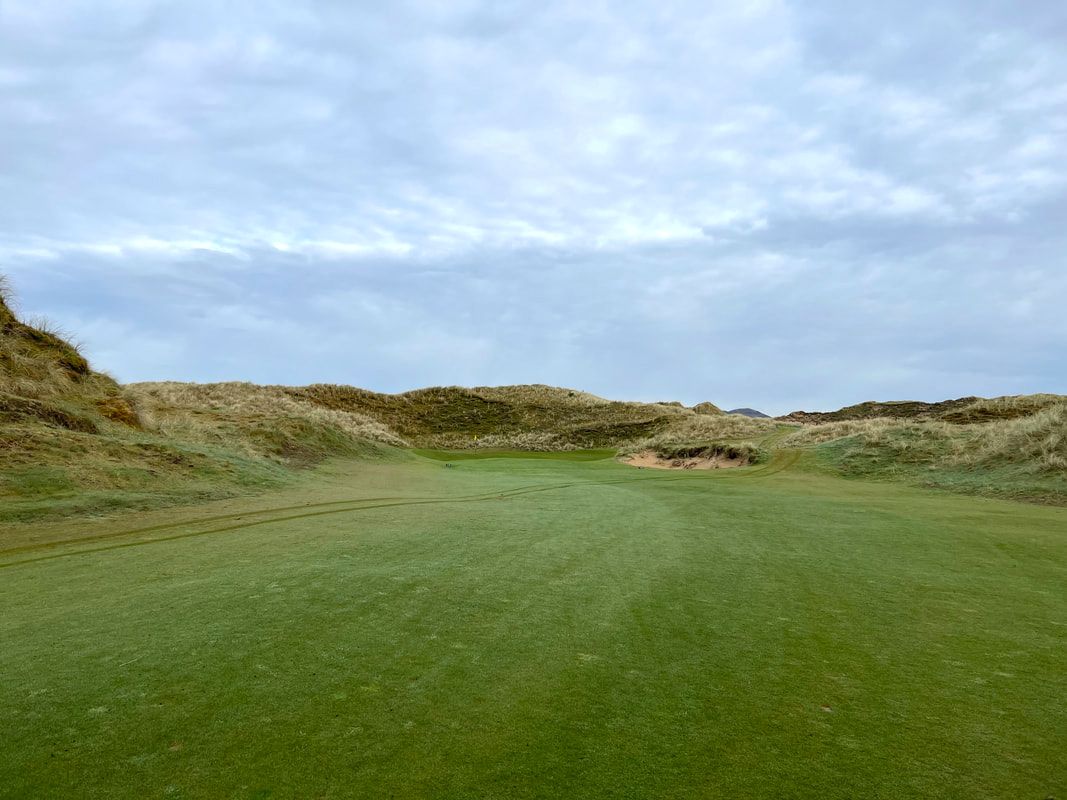



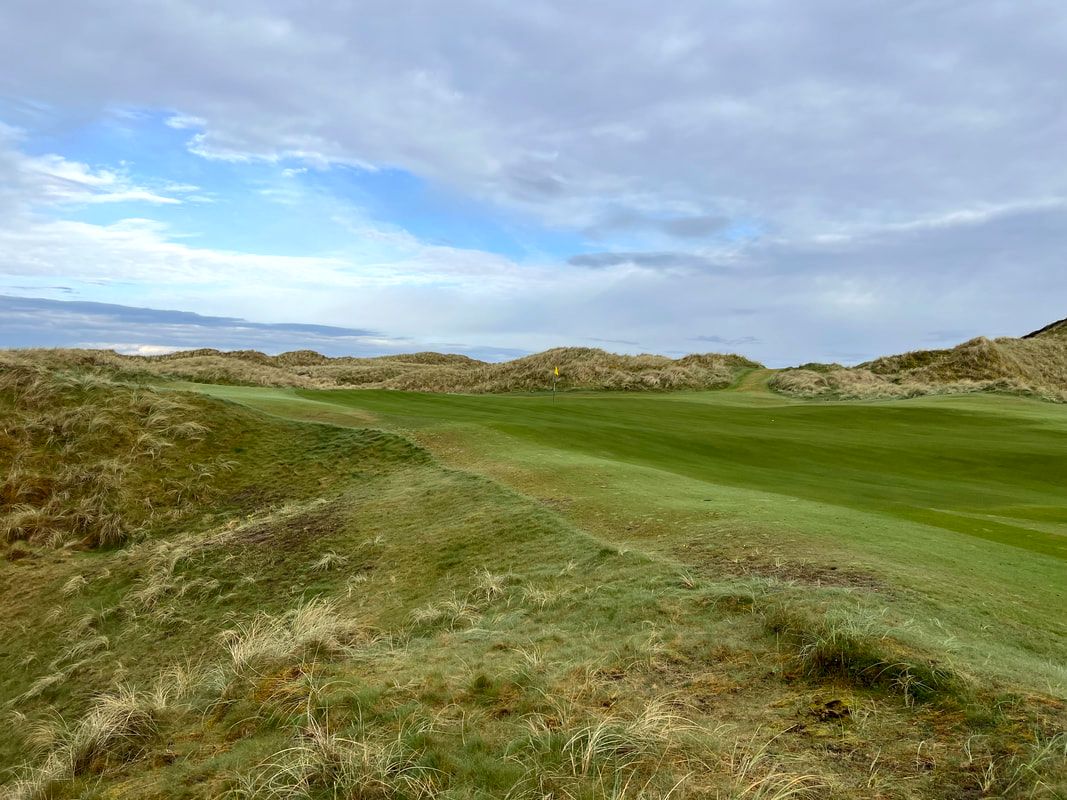

















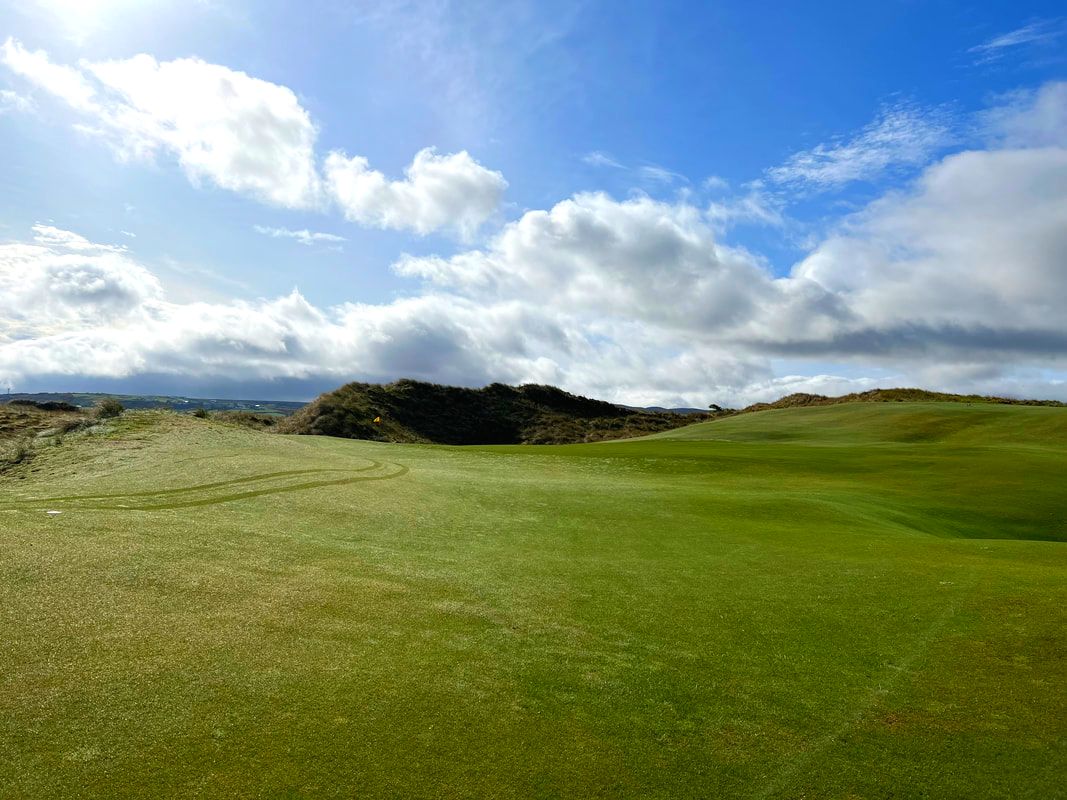




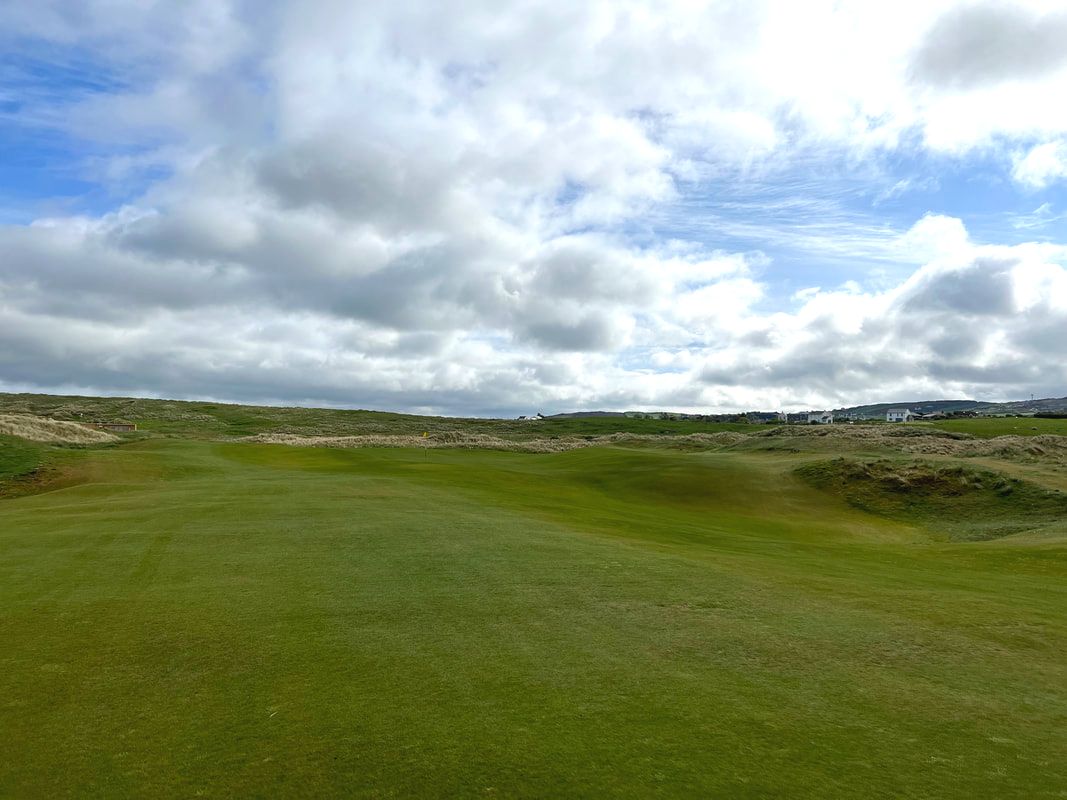



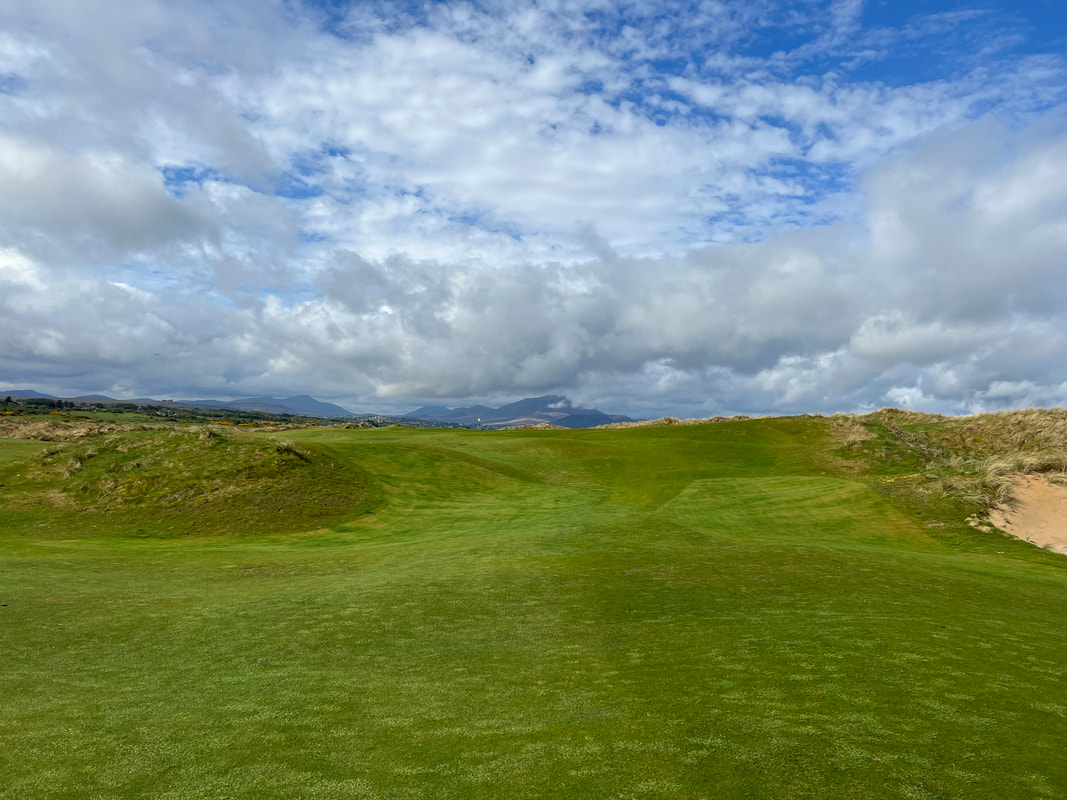













 RSS Feed
RSS Feed